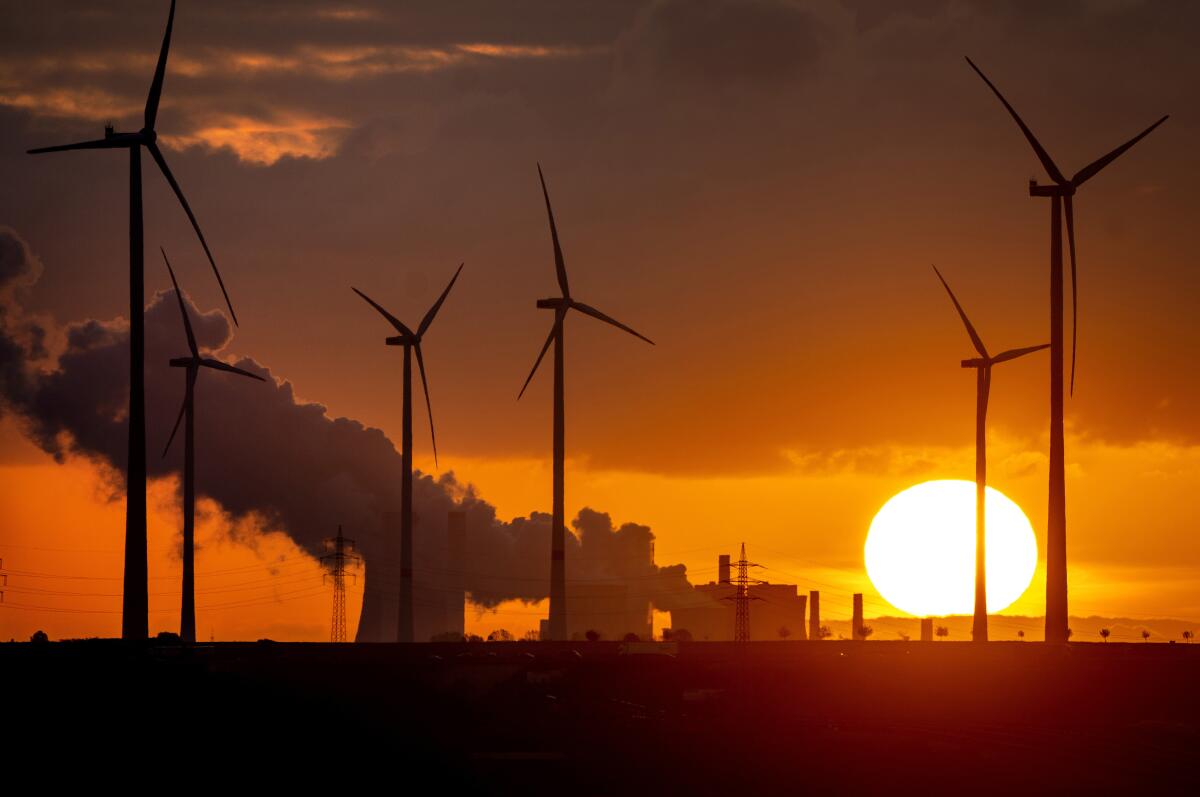Op-Ed: Europe’s carbon tariff is the right general idea, but doomed by details

- Share via
The European Union just unveiled its plan to impose border taxes on greenhouse gas polluters as part of its effort to become carbon neutral by 2050. In doing so it will become the first major economic bloc to try to enforce good climate behavior, not just on its own industries, but also on those that would sell to the EU.
The bloc does deserve credit for doing a better job at confronting the climate challenge than the U.S. or any other large economic bloc has. The need for action is hair-on-fire obvious. Unfortunately, the EU’s action won’t work.
More than three decades of local and regional initiatives have shown that a piecemeal approach can’t solve a global problem. Concerns are well documented. The EU itself has objected to another recent example of this fragmented approach, accusing the U.S. of unfair subsidies because of elements of the $370-billion climate plan in the Inflation Reduction Act. The U.S. trade representative, Katherine Tai, has also already expressed concern about how the EU’s border tax would affect trade with U.S. manufacturers.
The EU’s plan is also doomed by its complexity, which invites gaming of the system, and by its pace, which is wildly inadequate to the climate crisis facing the planet.
The global community will either have to take measures commensurate with the threat, or our grandchildren will be scrambling for food in a climate the world hasn’t seen in a few million years. Plenty of creatures will thrive in a world where temperatures are 2.5 to 3 degrees Celsius above pre-industrial levels, but humans will not be one of them.
What might those measures be? Tariffs could be a useful tool in rapidly reducing global emissions, but not if implemented piecemeal, and not if configured the way the EU proposes. I’ve written before about some design criteria for what an effective climate tariff might look like.
1. The tariffs must be universal. Greenhouse gas emissions now can be monitored at the national level. If all nations have to meet a set target, and we monitor each nation’s emissions, we eliminate the free-rider problem that has bedeviled prior agreements. (China was exempted from the Kyoto Protocol and has surged to being the largest emitter on Earth, pouring more greenhouse gasses into the atmosphere than the entire G-20.) If all nations have to meet a set target for reductions, exporters will have an incentive to police bad actors in their own countries, eliminating the incentive, for instance, to shift clean energy to exporting industries while continuing to use dirty fuels for home consumption.
2. Keep it simple. Set a clear target for each country to cut emissions by a certain amount. Then we can let any nation choose the way it wants to reduce emissions. China might meet targets through improving energy efficiency and switching to renewables. Brazil and Indonesia might instead reduce illegal deforestation, something they should be doing anyway.
3. Whatever we do, we should do it soon. Thirty years after the first efforts to combat climate change, annual emissions are more than 60% higher than they were in 1990, and last year they rose by nearly 6%. COP27 (27!) came and went without producing anything that will have a discernible, near-term impact on reducing emissions. Clearly, what we’ve been doing hasn’t worked.
Once we have set up simple global tariffs, to take effect immediately, the key becomes enforcement. We humans have already created the international institutions such as the World Trade Organization (which has expressed an institutional interest in dealing with climate change) and a treaty, the Paris agreement, that are needed to enact such a system. The World Bank could be useful as well, as an intermediary to redirect collected tariffs to the poorer nations to help them develop programs to meet targets.
The alternative is the path we’re now on: Economic blocs and nations going their own way, slowly and ineffectually. The EU border carbon tax may be the first such effort, but it won’t be the last. This piecemeal approach will inevitably inspire retaliatory polices from outside the bloc. Just maybe, the prospect of a cascade of border taxes, carbon tariffs and other national and regional measures will be sufficient to scare the global community into the concerted collective action our planet so clearly needs.
Eugene Linden is the author of “Winds of Change: Climate, Weather and the Destruction of Civilizations.”
More to Read
A cure for the common opinion
Get thought-provoking perspectives with our weekly newsletter.
You may occasionally receive promotional content from the Los Angeles Times.










